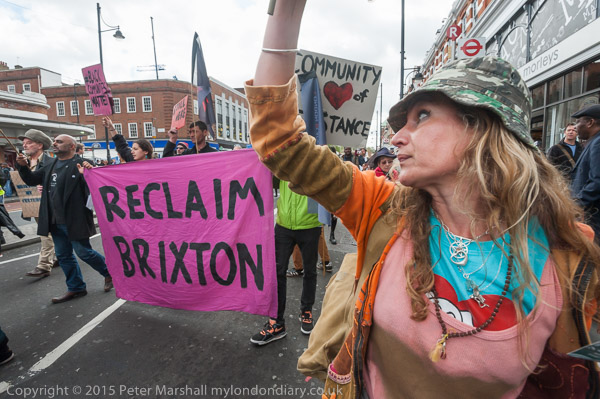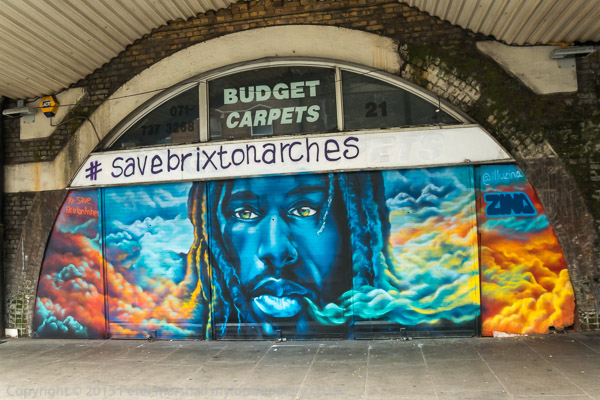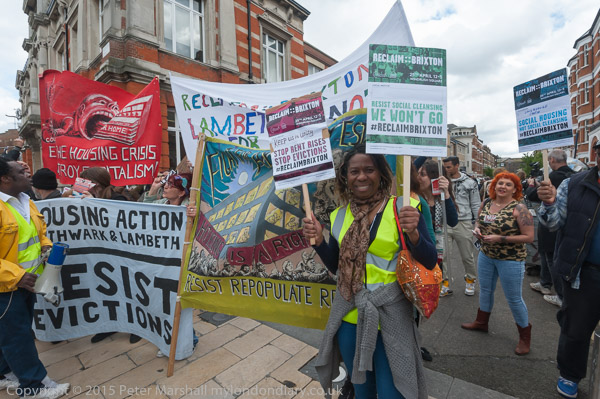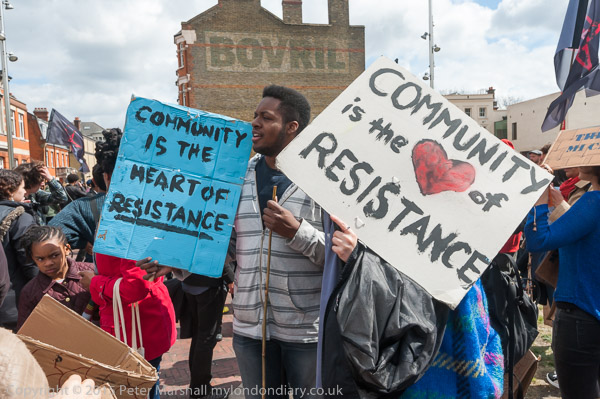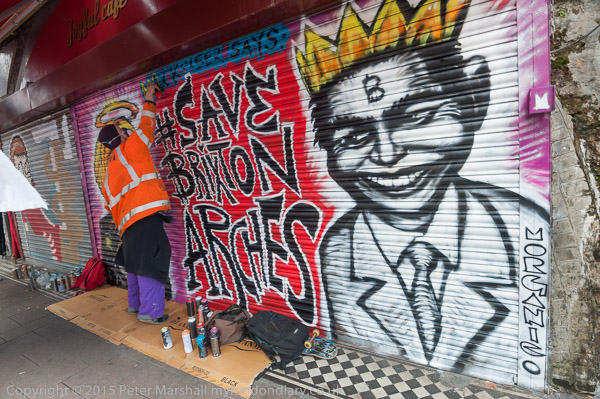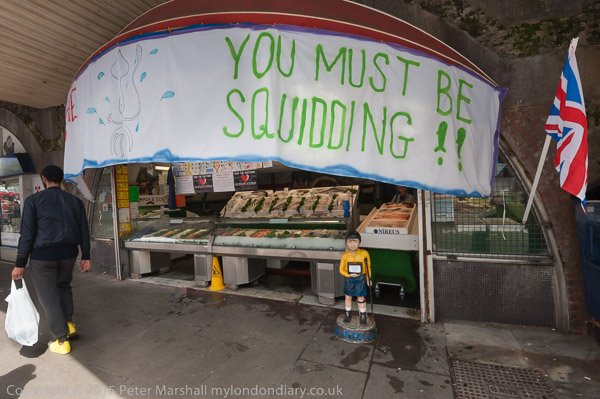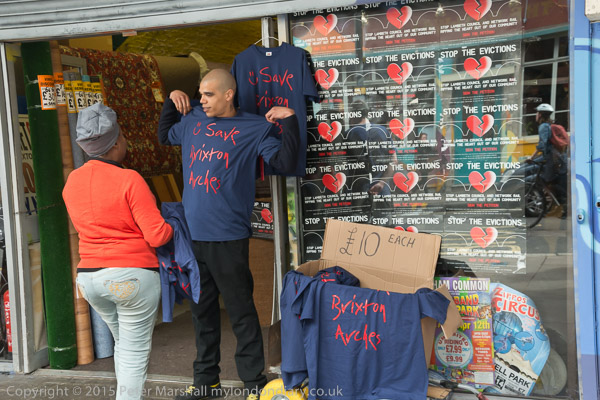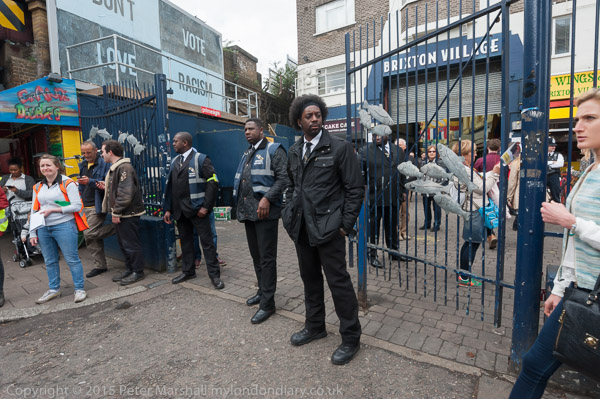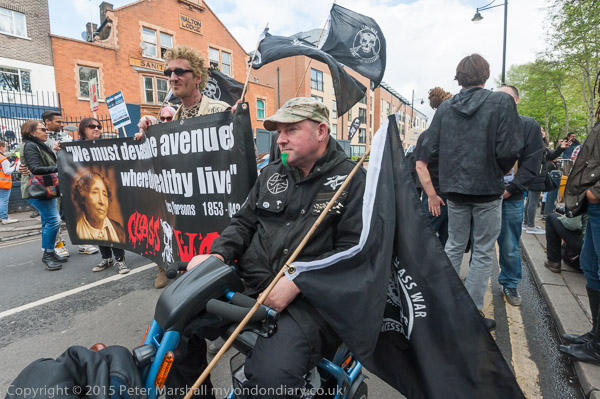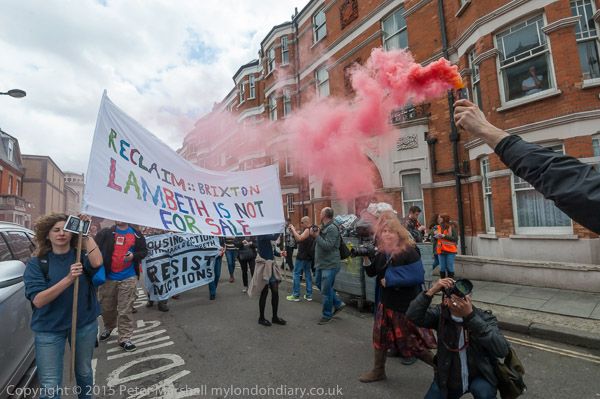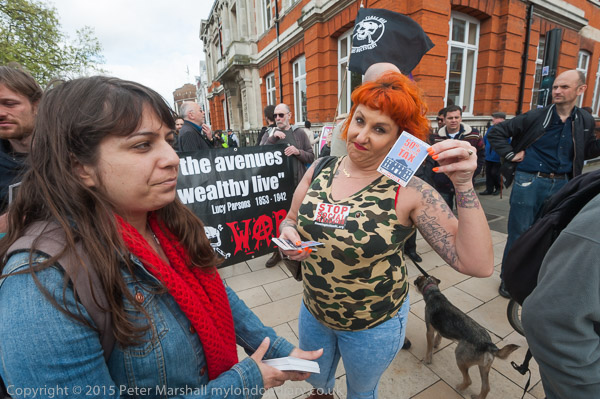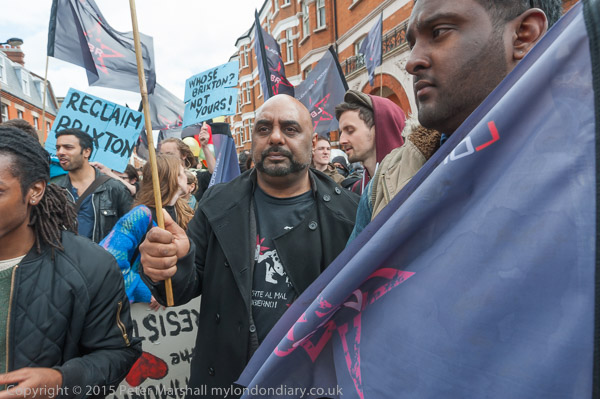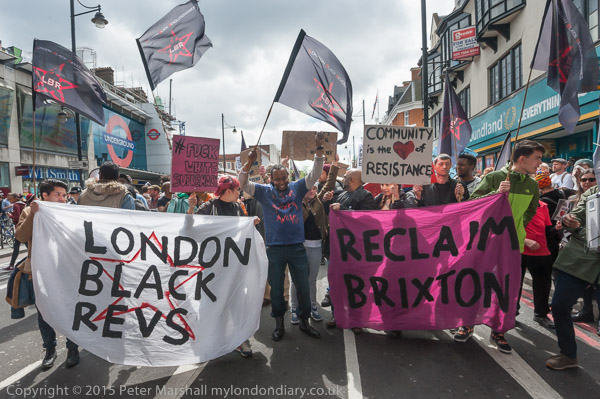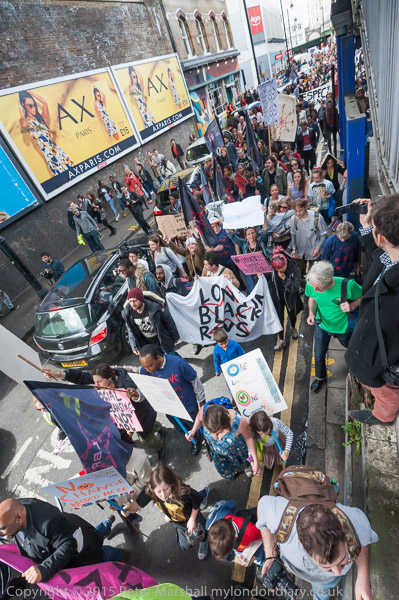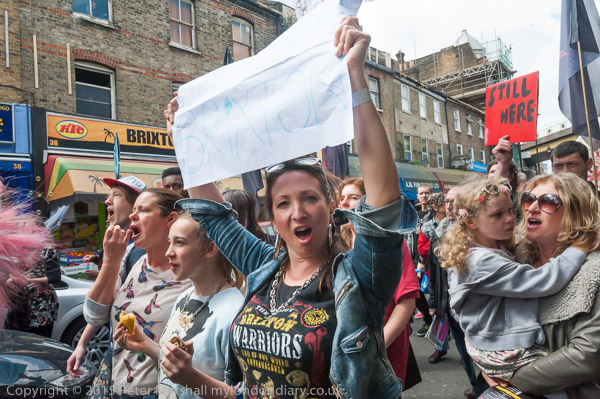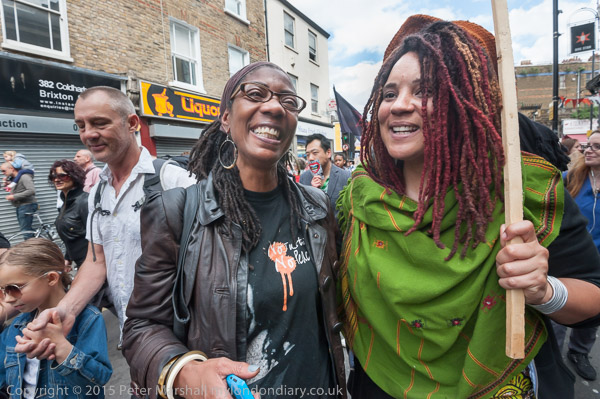Squat, Circus, Garage & Church continues my walk on Wednesday 19th July 1989 in Stockwell and South Lambeth which began with the previous post, Stockwell Park, Bus Garage, Tower and Mason.
I took a couple more pictures of the previously squatted Grade II listed house at 38 Guildford Road, which ended the previous post on this walk. It now seemed firmly bricked up against further occupation.
The garden gate was only tied closed with rope, but I didn’t trespass and photographed from the pavement. At the side of the house the gate was open, announcing thyat this was 38 and The House, with the message to ‘POSTMAN DELIVER LETTERS INSIDE GARDEN PLEASE’ and some drawings, with a leaping figure and the sun for the Solstice Festival as well as smiley faces.
As the smiley faces and the LSD on the wall show, the Solstice Festival in Stockwell was an acid culture event, celebrating peace and love – part of the ‘Second Summer of Love’ in 1989 which also saw raves and parties in deserted warehouses across the UK, largely propelled by Ecstasy. But I can find no details of this Stockwell event online.
Landsdowne Circus is the central element of the area laid out in 1843 with houses built shortly afterwards by John Snell; the land was owned by architect James Humphreys who probably designed the houses in the then popular neo-Classical style. These houses are at 35-41 on the south-east of the circus, which I think is all Grade II listed.
The area had deteriorated considerably by the middle of the twentieth century but fortunately escaped much wartime damage. After Lambeth Council failed to find a responsible legal owner they used compulsory purchase to take control of the area in 1951. It became a conservation area in 1968.
Grade II listed neo-Jacobean style former vicarage for St Barnabas Church immediately to the south, in a neo-Jacobean style. It is listed as Mandragon House and was built between 1843 and 1850 by John Snell as the vicarage to adjoining St Barnabas Chapel.
The church was deconsecrated in 1978 and converted into flats as Ekarro House by a housing cooperative, Ekarro Housing Co-operative Limited, set up by local residents which leased the church and vicarage, and now also manages some other properties in the area still as a cooperative.
Kelvedon House, a 22 storey tower block built nearby for Lambeth council in 1966 towers 64 metres in the background.
I walked back down to Landsowne Way and could not resist another photograph of the Grade II listed concrete bus garage, one of London’s finest postwar buildings completed in 1952. I hope its concrete is still safe.
I turned east down Lansdowne Way to South Lambeth Road where around a hundred yards to the north I came to this fine classical church, Stockwell Baptist Church at No. 276. Again Kelvedon House towers in the background.
The church web site has this short history:
And as it also says, it “has been part of the rich and ever-changing history of this part of London for a long while.“
Charles Spurgeon (1834-92) who preached the first sermon in the chapel was a remarkable man and one of the leading non-conformist preachers of the 19th century. For 38 years he was pastor at the Metropolitan Tabernacle at the Elephant & Castle. He founded an almshouse and an orphanage in Stockwell, as well as a college named after him following his death, and set up various institutions to aid the poor, following the Bible example of Jesus and exhorting his congregations to do so too. He had great influence both nationally and internationally and campaigned for free hospitals for the poor, and against slavery which antagonised Southern Baptists in the USA. He wrote many books, some of which are still now re-published and is still held in high esteem by many, particularly evangelical Christians.
My walk continued – more shortly.






